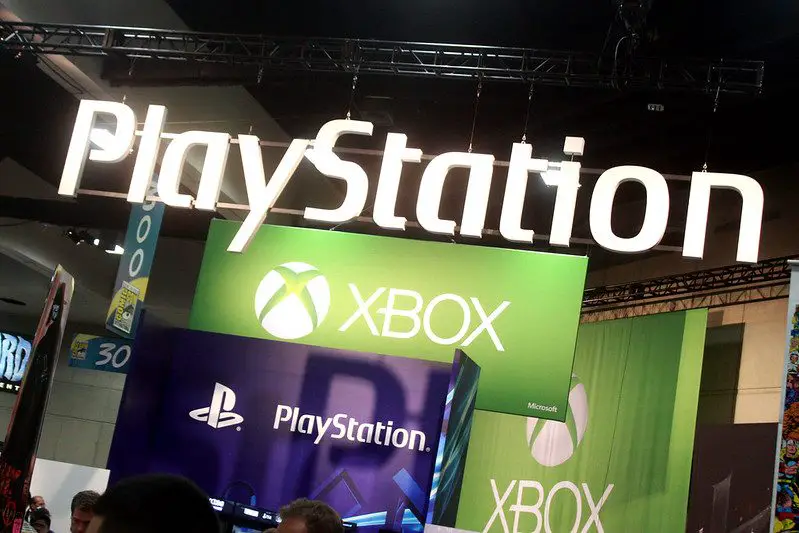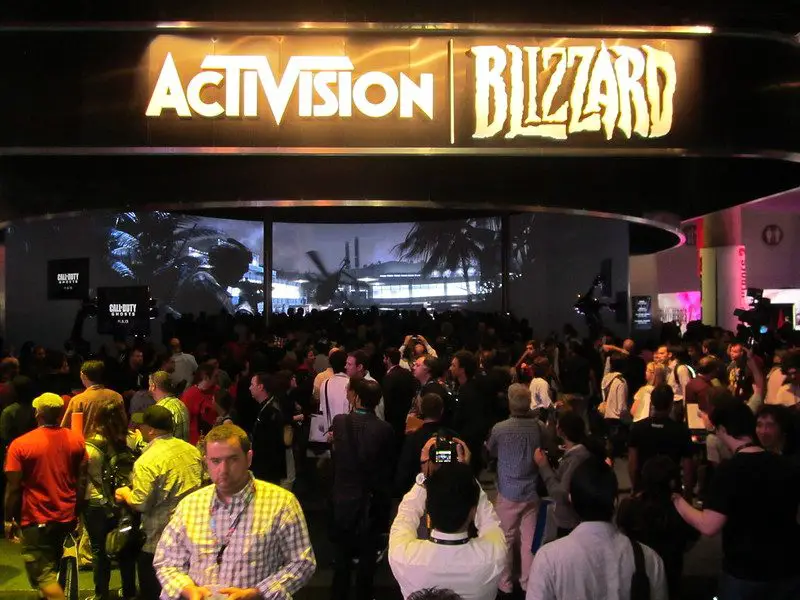Gaming isn’t cheap. That might seem an obvious statement, but it gets proven increasingly true with each passing year, at least with the traditional market. AAA games continue to grow more expensive, cutting games packages into DLC is standardized, and hardware availability is held to the mercy of scalpers. This doesn’t have to be the way, however, with the industry taking a direction that could drastically cut the cost for average users
Engagement is King
As much as interactive digital entertainment has changed over the years, there’s one thing that remains true – the platform rules supreme. Whether looking at Nintendo, Sony, or Microsoft, their individual goals in this respect all align. Each of them knows that gaming is expensive, each knows that the users will likely favour just one platform, and each wants their device to be the most popular.
“Playstation & Xbox booth” (CC BY-SA 2.0) by Gage Skidmore
It’s not a unique idea in the interactive entertainment world, as we can draw parallels to other industries like online casinos. Free demo slots, for example, work by offering players access to a wide range of games like Fishin’ Reels, Phoenix Forge, and Panther Moon with no money down. Though they don’t earn anything directly from this deal, offering this ability to players serves to ingratiate their service, which can then be built upon by quality service and selection.
The video game industry wants to take inspiration from this idea, with a service that sees more direct methods of customer payment. The best illustration of how manufacturers manage engagement can be seen in how Sony operates its PlayStation Network online system. Like with the other consoles, playing online games on Sony’s machine involves paying a monthly fee. This is generally regarded as an upkeep cost, but Sony leverages the engagement money it provides for ‘free’ benefits.
These come in the form of a new set of around three full games that rotate with the system each month. Sometimes these are duds, but other times they’re enormous AAA titles like the Final Fantasy 7 Remake, Hitman 2, and Shadow of the Tomb Raider. Considering that a PSN subscription can cost as little as $60 a year, and many of these games retail for upwards of $40 individually, the savings are undeniable.
The real kicker with this system is that to play the free games you’ve claimed, you need to have an active PlayStation subscription. Over time, this leads the player to collect a huge library, which makes them want to keep subscribed in a sort of dedicated feedback effect.
Making a Choice
All of these aspects can be great for players, but they also mean that there’s a growing separation between players and the platforms they love. This problem has only recently expanded with manufacturers buying big publishers and developers like Microsoft with Activision Blizzard, which will eventually manifest as increasing platform exclusivity.
“E3 2013 Activision Blizzard” (CC BY 2.0) by tarciltarcil
What this means is that, while getting games could be much cheaper in the future, you’re also going to have to be much more careful about what system you call home. If you still haven’t bought a new-gen device, then be sure to look at who is owned by whom, because changes down the line are likely to be immense. Of course, you can also go the PC route for the widest library, but that’s never going to be the cheapest option.










